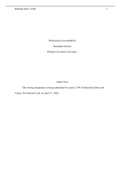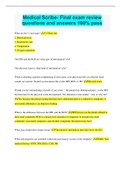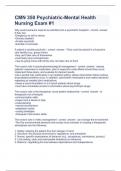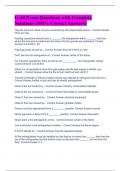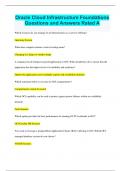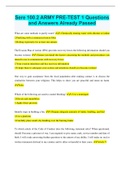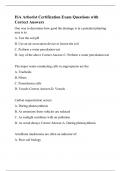Exam (elaborations)
GCSE Physics -Paper 2(AQA) Latest Exam Questions And All Correct Answers
- Course
- Institution
Scalar - Answer quantities with only magnitude such as speed, distance, time and mass. Vector - Answer quantities with a magnitude and direction e.g. acceleration, force momentum and weight. A vector quantity can be represented as an arrow, the size representing the magnitude and the direc...
[Show more]




